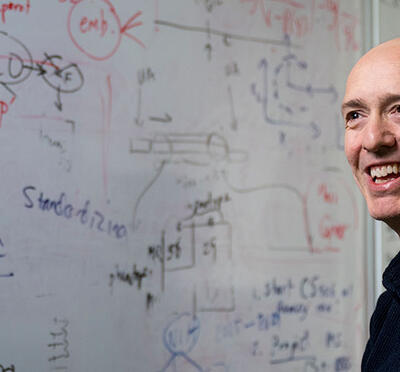Oregon State University will participate in a new research institute that will develop artificial intelligence solutions to tackle some of agriculture’s biggest challenges related to labor, water, weather, and climate change.
The institute, funded by a $20 million federal grant, is led by Washington State University and will involve 13 Oregon State faculty from the College of Engineering, spanning computer science, electrical engineering, and robotics. It’s one of 11 institutes launched by the National Science Foundation and among two funded by the U.S. Department of Agriculture-National Institute of Food and Agriculture in 2021. Called the AgAID Institute — for USDA-NIFA Institute for Agricultural AI for Transforming Workforce and Decision Support — its work will involve collaborative efforts among faculty and scientists with expertise in a diverse range of areas in computer science, agriculture, and agricultural outreach.
“As the climate changes and the human population grows, it is essential to improve the robustness, efficiency, and adaptability of food production,” said Alan Fern, professor of computer science and principal investigator representing Oregon State. “The institute aims to achieve this by identifying the most synergistic ways to integrate humans and AI/robotics technology.”
While traditional AI development involves scientists making tools and delivering them to end-users, the AgAID Institute’s development process will involve the people who intend to use AI solutions, such as farmers, farm workers, and policy makers, said Ananth Kalyanaraman, a WSU computer science professor and the institute’s lead principal investigator.
Other institute members include the University of California, Merced; University of Virginia; Carnegie Mellon University; Heritage University; Wenatchee Valley College; and Kansas State University. Private sector partners include IBM Research and the start-up innov8.ag.
According to Fern, the key principle behind the institute’s work will be to take a human-first approach, which will include iterative cycles of working with end-users to design and build workflows involving AI/robotics technology that will have real utility and, hence, be used.
“This is in contrast to focusing on advanced AI/robotics research that conceptually relates to agricultural problems but never materializes into actual deployments that deliver utility,” he said. “Humans and AI/robotics have very different capabilities and competencies, and there are many possible ways of combining them for any given agricultural application, but only some of those combinations will be effective.”
Fern added that Oregon State’s team will serve as the lead for fundamental and applied research in AI, robotics, and human factors. Its researchers will work closely with agriculture researchers and, most importantly, with agricultural end-users to identify, develop, and deploy synergistic workflows involving humans and AI/robotics technology that will have a significant impact on agricultural practices.
Kalyanaraman added that AgAID institute researchers will seek solutions that can adapt to changing environments and amplify productivity by combining human skills and machine capabilities to be more effective than either would be alone. For instance, pruning trees is a highly skilled task, but a beginner-level worker could benefit from an AI tool that provides expert guidance to help decide which is the best branch to prune. The task is done better, and the worker starts to learn from the feedback. With the current shortage of skilled labor, AI can benefit both the orchard and the worker.
“It’s a partnership. AI can help us bridge the divide between high-skilled and low-skilled workers,” Kalyanaraman said.
Educating the workforce at all levels will also be central to the AgAID Institute, not just to encourage AI adoption but as a matter of equity, according to institute leaders. Multiple education programs targeting K-12, higher education, and workers are planned. The goal is to raise AI skill levels and open new career paths, which can improve pay and quality of life for agricultural workers and attract more people to agriculture and computing professions.
The institute will undertake several challenging test cases involving specialty crops, many of which grow in the Western United States, such as apples, cherries, mint, and almonds. These crops encompass several major challenges: they require intensive labor and irrigation, and they are vulnerable to weather events and climate change. Specialty crops account for 87% of the U.S. agricultural workforce, and about 40% of these crops are perennial, requiring long-term management and resource planning.
“The biggest impact the institute can have will not necessarily be specific agricultural solutions,” Fern said, “but, rather, the knowledge gained and disseminated about the processes involved in going from initial application concepts to deployments that deliver real value to end users.”





